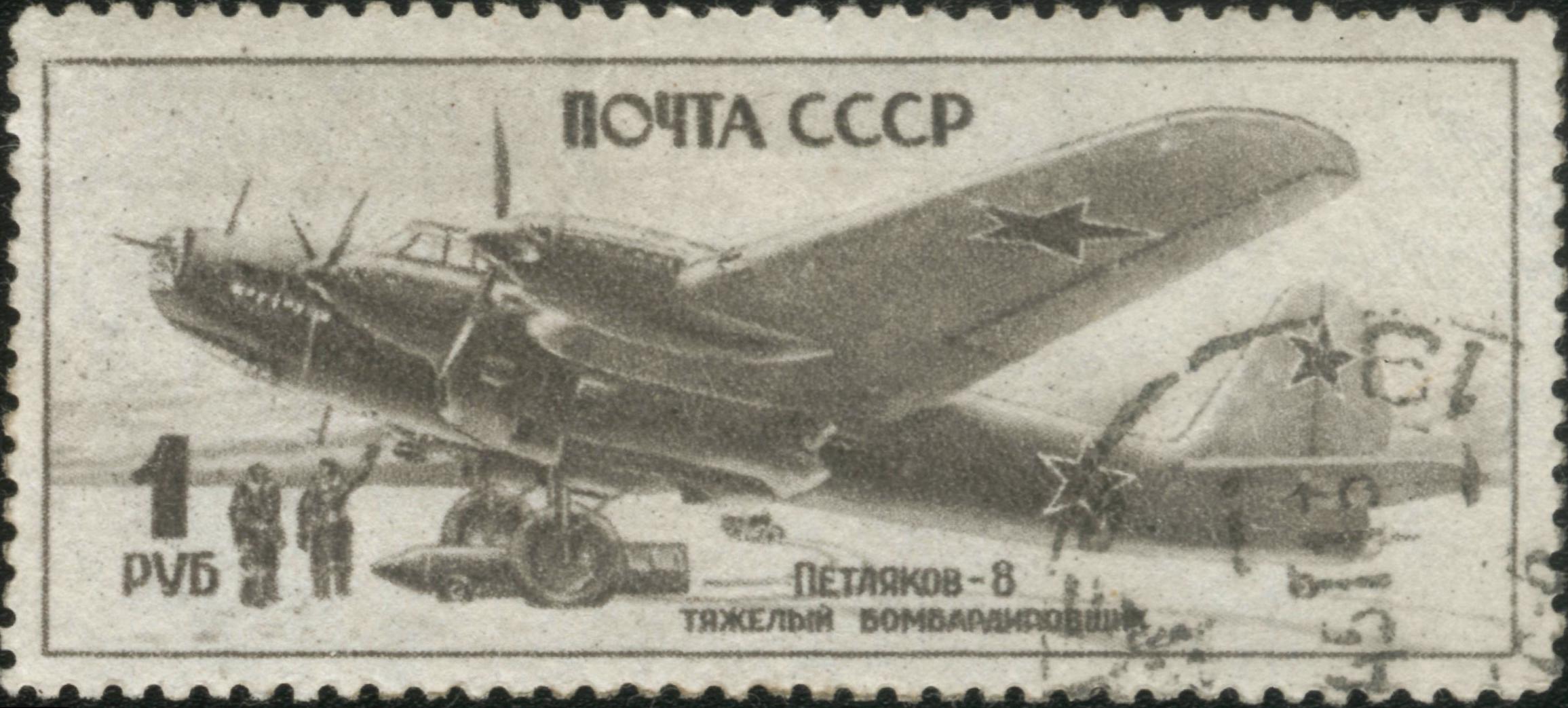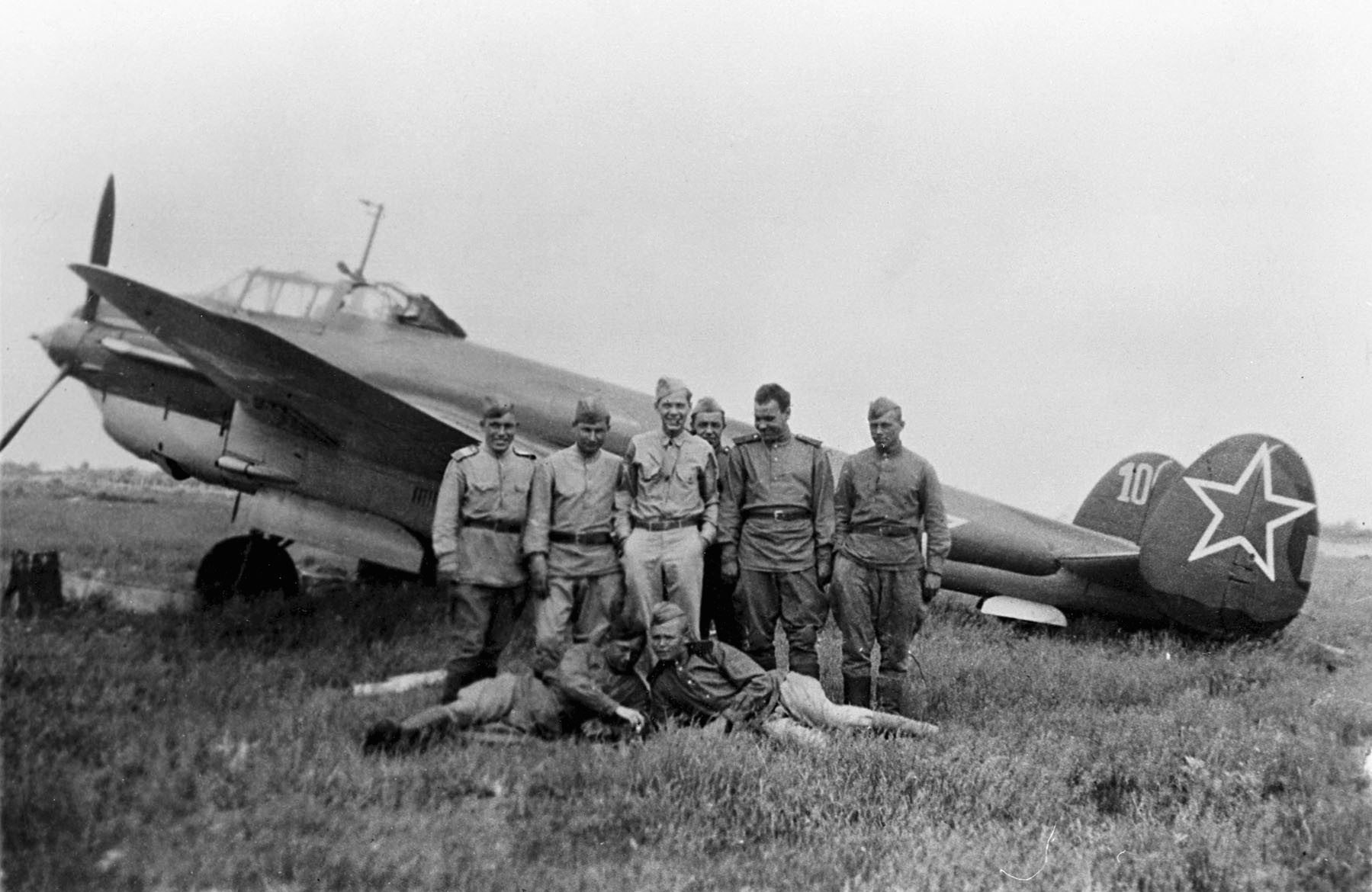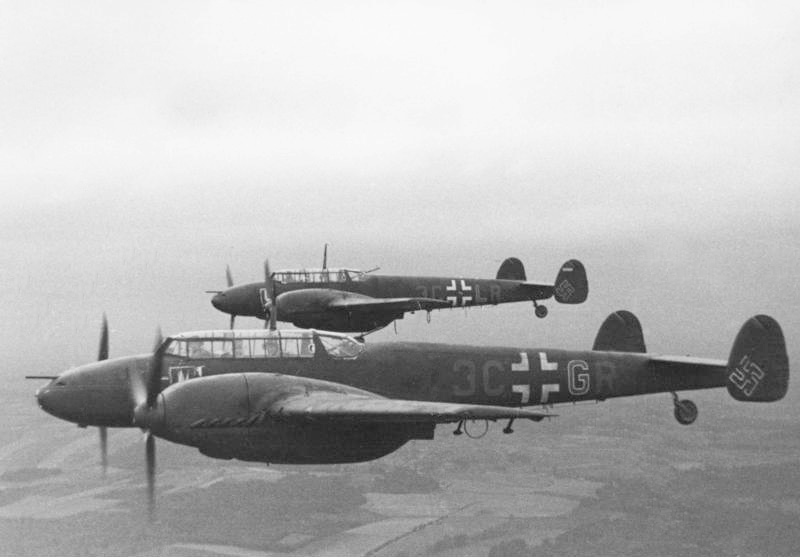|
Stepan Suprun
Stepan Pavlovich Suprun (russian: Степан Павлович Супрун; – 4 July 1941) was a Soviet test pilot who tested over 140 aircraft types during his career. He was also a fighter pilot and twice awarded the title Hero of the Soviet Union. Early life Suprun was born on to a Ukrainian family in the Kharkov Governorate of the Russian Empire. In 1910 he and his family moved to the United States, and in 1913 they moved to Canada where he graduated from eight grades of school in Winnipeg and joined the Young Communist League of Canada before moving to the newly-formed Soviet Union in 1924. Originally he lived in Altai Krai before moving to Alma-Ata. He began working in Ukraine as an apprentice in a workshop in 1925, and from 1926 to 1928 he worked as a carpenter in the city Sumy. In 1928 he began working at a factory as a milling machine operator. Aviation and military career Having entered the military in October 1929, he graduated from initial aviation traini ... [...More Info...] [...Related Items...] OR: [Wikipedia] [Google] [Baidu] |
Bilopillia Raion
Bilopillia Raion ( uk, Білопільський район) was a raion in Sumy Oblast in Central Ukraine. The administrative center of the raion was the town of Bilopillia. The raion was abolished on 18 July 2020 as part of the administrative reform of Ukraine, which reduced the number of raions of Sumy Oblast to five. The last estimate of the raion population was References Former raions of Sumy Oblast 1923 establishments in Ukraine Ukrainian raions abolished during the 2020 administrative reform {{Sumy-geo-stub ... [...More Info...] [...Related Items...] OR: [Wikipedia] [Google] [Baidu] |
Sergei Denisov (aviator)
Sergey Prokofyevich Denisov (russian: Серге́й Проко́фьевич Дени́сов; 6 June 1971) was a Soviet fighter pilot during the Spanish Civil War who went on to hold various high commands during the Battles of Khalkhin Gol, the Soviet-Finnish War, and World War II in addition to being awarded the title Hero of the Soviet Union twice. Early life Denisov was born on to a Ukrainian family in Rossosh, Russian Empire. After completing his fourth grade of schooling in 1921 he went on to attend trade school, and in 1926 he completed his third grade of trade school, after which he worked as a mechanic until joining the military in 1929. Military career Having entered the military in October 1929, he was based in Gomel until being transferred to the 83rd Training Squadron in Smolensk, which soon became a flight school. There he studied with future twice Hero of the Soviet Union Stepan Suprun before graduating in July 1931; he became a member of the communist ... [...More Info...] [...Related Items...] OR: [Wikipedia] [Google] [Baidu] |
Pe-8
The Petlyakov Pe-8 (russian: Петляков Пе-8) was a Soviet Union, Soviet heavy bomber designed before World War II, and the only four-engine bomber the USSR built during the war. Produced in limited numbers, it was used to Bombing of Berlin in World War II, bomb Berlin in August 1941. It was also used for so-called "morale raids" designed to raise the spirit of the Soviet people by exposing Axis powers, Axis vulnerabilities. Its primary mission, however, was to attack German airfields, rail yards and other rear-area facilities at night, although one was used to fly the People's Commissar of Foreign Affairs (Foreign Minister) Vyacheslav Molotov from Moscow to the United States in 1942. Originally designated the TB-7, the aircraft was renamed the Pe-8 after its primary designer, Vladimir Petlyakov, died in a plane crash in 1942. Supply problems complicated the aircraft's production and the Pe-8s also had engine problems. As Soviet morale boosters, they were also high-value t ... [...More Info...] [...Related Items...] OR: [Wikipedia] [Google] [Baidu] |
Pe-2
The Petlyakov Pe-2 (russian: Петляков Пе-2) was a Soviet Union, Soviet twin-engine dive bomber used during World War II. One of the outstanding tactical attack aircraft of the war,Ethell 1996, p. 152. it also proved successful as a heavy fighter, as a night fighter (Petlyakov Pe-3, Pe-3 variant) and as a reconnaissance aircraft.Angelucci and Matricardi 1978, p. 234. The Pe-2 was, numerically, the most important Soviet bomber of World War II, at their peak comprising 75% of the Soviet twin-engine bomber force.Smith 2003, pp. 155. The Soviets manufactured Pe-2s in greater numbers (11,430 built) during the war than any other twin-engine combat aircraft except for the German Junkers Ju 88 and the British Vickers Wellington.Guston 1980, p. 173. Several communist air forces flew the type after the war, when it became known by the NATO reporting name ''Buck''. Development In 1937, Vladimir Petlyakov was the leader of the Heavy Aircraft Brigade at the Tupolev OKB responsible for ... [...More Info...] [...Related Items...] OR: [Wikipedia] [Google] [Baidu] |
Il-2
The Ilyushin Il-2 (Russian language, Russian: Илью́шин Ил-2) is a Ground attack aircraft, ground-attack plane that was produced by the Soviet Union in large numbers during the World War II, Second World War. The word ''shturmovík'' (Cyrillic script, Cyrillic: штурмовик), the generic Russian term for a ground-attack aircraft, became a synecdoche for the Il-2 in English sources, where it is commonly rendered Shturmovik, StormovikStapfer, 1995 and Sturmovik.Rastrenin, 2008 To Il-2 pilots, the aircraft was known by the diminutive "Ilyusha". To the soldiers on the ground, it was called the "Hunchback", the "Flying Tank" or the "Flying Infantryman". Its postwar List of NATO reporting names for bombers, NATO reporting name was Bark.Gunston 1995, p. 106. During the war, 36,183 units of the Il-2 were produced, and in combination with its successor, the Ilyushin Il-10, a total of 42,330Jane's 1989, p. 529. were built, making it the single most produced military airc ... [...More Info...] [...Related Items...] OR: [Wikipedia] [Google] [Baidu] |
Junkers Ju 88
The Junkers Ju 88 is a German World War II ''Luftwaffe'' twin-engined multirole combat aircraft. Junkers Aircraft and Motor Works (JFM) designed the plane in the mid-1930s as a so-called ''Schnellbomber'' ("fast bomber") that would be too fast for fighters of its era to intercept. It suffered from technical problems during its development and early operational periods but became one of the most versatile combat aircraft of the war. Like a number of other ''Luftwaffe'' bombers, it served as a bomber, dive bomber, night fighter, torpedo bomber, reconnaissance aircraft, heavy fighter and at the end of the war, as a flying bomb. Despite a protracted development, it became one of the ''Luftwaffe''s most important aircraft. The assembly line ran constantly from 1936 to 1945 and more than 15,000 Ju 88s were built in dozens of variants, more than any other twin-engine German aircraft of the period. Throughout production the basic structure of the aircraft remained unchanged.Angelucci a ... [...More Info...] [...Related Items...] OR: [Wikipedia] [Google] [Baidu] |
Heinkel He 100
The Heinkel He 100 was a German pre-World War II fighter aircraft design from Heinkel. Although it proved to be one of the fastest fighter aircraft in the world at the time of its development, the design was not ordered into series production. Approximately 19 prototypes and pre-production examples were built. None are known to have survived the war. The reason for the He 100 failing to reach production status is mostly unknown. Officially, the Luftwaffe rejected the He 100 to concentrate single-seat fighter development on the Messerschmitt Bf 109. Following the adoption of the Bf 109 and Messerschmitt Bf 110 as the Luftwaffe's standard fighter types, the Ministry of Aviation (the Reichsluftfahrtministerium or RLM) announced a "rationalization" policy that placed fighter development at Messerschmitt and bomber development at Heinkel. Because there are no surviving examples, and since many factory documents - including all blueprints for the He 100 - were destroyed during a bomb ... [...More Info...] [...Related Items...] OR: [Wikipedia] [Google] [Baidu] |
Focke-Wulf Fw 58
The Focke-Wulf Fw 58 ''Weihe'' ( Harrier) was a German aircraft, built to fill a request by the ''Luftwaffe'' for a multi-role aircraft, to be used as an advanced trainer for pilots, gunners and radio operators. Design and development The Fw 58 was a low-wing monoplane with two piston engines mounted in nacelles on the wing leading edges. The crew sat under an enclosed canopy. Aft of the flight deck, the fuselage was open to form a moveable machine gun station. The tailwheel undercarriage was retractable. Operational history The Fw 58 was widely used for training ''Luftwaffe'' personnel. It was also used as a VIP transport, ambulance, feeder airliner, photo reconnaissance and weather research aircraft. It was built under license in Bulgaria, Hungary and Brazil. It was also operated by several countries such as the Netherlands, Romania, Croatia and Turkey. Variants ;Fw 58 V1 :First prototype, first flown in 1934 ;Fw 58 V2 :Second prototype. ;Fw 58 V3 :Third prototype. ;Fw 58 ... [...More Info...] [...Related Items...] OR: [Wikipedia] [Google] [Baidu] |
Dornier Do 215
The Dornier Do 215 was a light bomber, aerial reconnaissance aircraft and later a night fighter, produced by Dornier originally for export, but in the event most served in the ''Luftwaffe''. Like its predecessor, the Dornier Do 17, it inherited the title "The Flying Pencil" because of its slim fuselage. The successor of the Do 215 was the Do 217. Design and development The Do 17 fast bomber elicited renewed interest from foreign air forces (after the initial Do 17K series production). In July 1937, Dornier therefore prepared a pre-series Do 17 Z-0 as a demonstrator for export customers. It was given the civil registration D-AAIV. While this aircraft was essentially identical to the production Do 17Z, the assigned the designation Do 215 to the export version. However, in spite of the Do 215 being designated as an export version, many Do 215s were used by the Luftwaffe. The first prototype, Do 215 V1, retained the nine-cylinder Bramo 323 ''Fafnir'' radial engine of the Do 17Z. ... [...More Info...] [...Related Items...] OR: [Wikipedia] [Google] [Baidu] |
Messerschmitt Bf 110
The Messerschmitt Bf 110, often known unofficially as the Me 110,Because it was built before ''Bayerische Flugzeugwerke'' became Messerschmitt AG in July 1938, the Bf 110 was never officially given the designation Me 110. is a twin-engine (Destroyer, heavy fighter), fighter-bomber (''Jagdbomber'' or ''Jabo''), and night fighter (''Nachtjäger'') developed in Nazi Germany in the 1930s and used by the Luftwaffe during World War II. Hermann Göring was a proponent of the Bf 110, believing its heavy armament, speed, and range would make the Bf 110 the Luftwaffe’s premier offensive fighter. Early variants were armed with two MG FF 20 mm cannon, four 7.92 mm (.312 in) MG 17 machine guns, and one 7.92 mm (.312 in) MG 15 machine gun for defence (later variants would replace the MG FFs with MG 151s and the rear gunner station would be armed with the twin-barreled MG 81Z). Development work on an improved type to replace the Bf 110 - the Messerschmitt Me 210 - began be ... [...More Info...] [...Related Items...] OR: [Wikipedia] [Google] [Baidu] |
Messerschmitt Bf 109
The Messerschmitt Bf 109 is a German World War II fighter aircraft that was, along with the Focke-Wulf Fw 190, the backbone of the Luftwaffe's fighter force. The Bf 109 first saw operational service in 1937 during the Spanish Civil War and was still in service at the end of World War II in 1945. It was one of the most advanced fighters when it first appeared, with an all-metal monocoque construction, a closed canopy, and retractable landing gear. It was powered by a liquid-cooled, inverted-V12 aero engine. It was called the Me 109 by Allied aircrew and some German aces, even though this was not the official German designation. It was designed by Willy Messerschmitt and Robert Lusser who worked at Bayerische Flugzeugwerke during the early to mid-1930s. It was conceived as an interceptor, although later models were developed to fulfill multiple tasks, serving as bomber escort, fighter-bomber, day-, night-, all-weather fighter, ground-attack aircraft, and reconnaissance ... [...More Info...] [...Related Items...] OR: [Wikipedia] [Google] [Baidu] |
Chongqing
Chongqing ( or ; ; Sichuanese dialects, Sichuanese pronunciation: , Standard Mandarin pronunciation: ), Postal Romanization, alternately romanized as Chungking (), is a Direct-administered municipalities of China, municipality in Southwest China. The official abbreviation of the city, "" (), was approved by the State Council of the People's Republic of China, State Council on 18 April 1997. This abbreviation is derived from the old name of a part of the Jialing River that runs through Chongqing and feeds into the Yangtze River. Administratively, it is one of the four municipalities under the direct administration of the Government of China, central government of the People's Republic of China (the other three are Beijing, Shanghai, and Tianjin), and the only such municipality located deep inland. The municipality of Chongqing, roughly the size of Austria, includes the city of Chongqing as well as various discontiguous cities. Due to a classification technicality, Chongqing ... [...More Info...] [...Related Items...] OR: [Wikipedia] [Google] [Baidu] |


.jpg)
.jpg)


.jpg)


